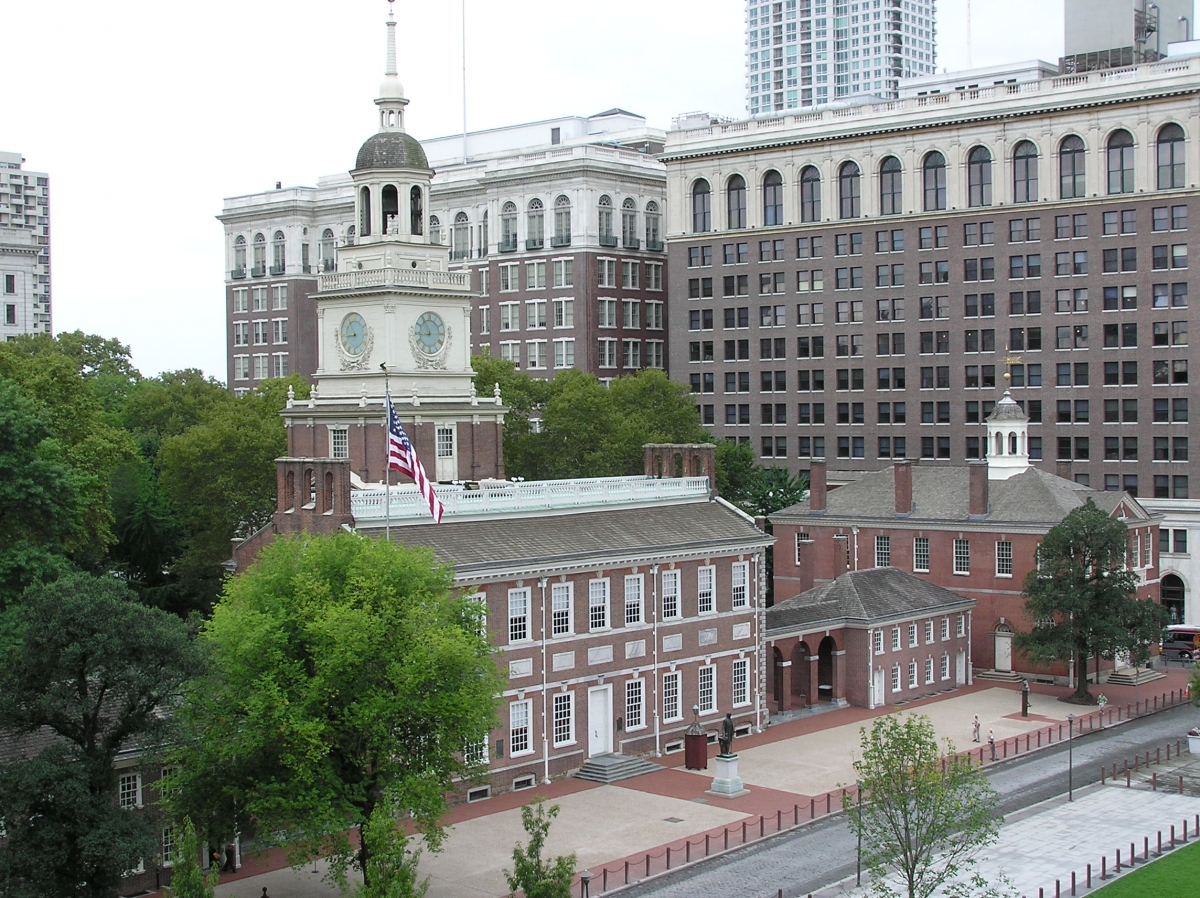Related Posts
- Buy Tickets for The Constitutional Walking Tour of Philadelphia – See 20+ Sites on a Primary Overview of Independence Park, including the Liberty Bell and Independence Hall
- Independence Hall History
- The Second Continental Congress
- Lancaster is the Capital of the United States - This Day in History - September 27, 1777
- Alexander Hamilton - One of America's Founding Fathers
- John Dickinson - One of America's Founding Fathers
- Constitution of the United States
On This Day in History, June 20, 1783, The Pennsylvania Mutiny occured.

Up until June 20, 1783 the capital of the newly formed United States had primarily been located in Philadelphia, the nation's largest city which was also centrally located. Philadelphia was where Americans first came together for the First Continental Congress in 1774. A year later they returned to Philadelphia and met in Independence Hall for the Second Continental Congress, where they eventually declared independence from Britain.
There were periods where the threat of the British Army during the Revolutionary War had pushed the capital elsewhere. For a couple of months the Continental Congress met in Baltimore. When the British took over Philadelphia following their victory at Brandywine, the capital moved to Lancaster for a single day and then on to York, Pennsylvania for more than half a year. As soon as the British departed Philadelphia however, the capital moved right back. With the Revolutionary War finally coming to an end and the threat of the British receding, most Americans likely awoke on June 20, 1783 assuming that Philadelphia would forever remain the capital of the United States, but within 48 hours the capital would leave the city of Philadelphia, never to return on a permanent basis.
The Revolutionary War was ending, but America's problems were far from over. The country was deep in debt from their war efforts and struggling to meet its obligations, including the payment of soldiers who had served in the war. For many Continental Army soldiers, their victory over the British came at great personal cost and as the war was coming to a close and it was becoming increasingly clear that many would never receive the pay they were promised, turmoil began to spread among their ranks. On June 17, 1783 a group of soldiers threatened Congress with action if they were not paid for their service. When Congress ignored their request for payment, roughly 400 Continental Army soldiers marched into Philadelphia, barricaded Congress inside Independence Hall and demanded payment for their service.
It was only through a negotiation led by Alexander Hamilton, himself a veteran of the Continental Army, that the soldiers allowed Congress to leave Independence Hall. Hamilton and other delegates then petitioned the Pennsylvania government for protection from the revolt. President of the Executive Council of Pennsylvania(a position roughly the same as a modern day governor), John Dickinson, listened to the pleas for protection but ultimately decided against deploying the Pennsylvania Militia to protect Congress. It's unclear why exactly Dickinson decided not to provide protection for the federal government, though it's believed that Dickinson was not sure if Pennsylvania Militia soldiers would even fight their friends and brothers serving in the Continental Army and feared deploying the militia could actually make things worse and lead what had been a relatively peaceful protest into violence.
While the soldiers involved in the Pennsylvania Mutiny never harmed any members of Congress, their continued presence nonetheless worried Congress. Two days later on June 22, 1783 with no sign of the Mutiny dying down, Congress fled Philadelphia in the early morning and moved the Capital of the United States to Princeton, New Jersey.
Years later when America's Founding Fathers were once again gathered in Philadelphia crafting the United States Constitution, it is clear that the Pennsylvania Mutiny still weighed heavy on their minds. The Constitution did not stipulate the location of the capital, but it did state clearly that it would be located in its own Federal District and provide for its own protection, ensuring they'd never again have to depend on the state the capital was located within to protect the Federal Government. The capital returned to Philadelphia on a temporary basis in the 1790s while Washington, D.C. was built, but once D.C. was built, the capital moved out of Philadelphia in 1800, never to return again.



